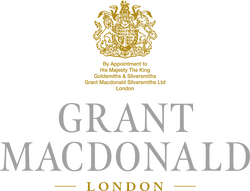If you remember the 1970s, only just remember those years or missed them entirely, you probably have a sense of what they were like. It was the decade that gave us Disco dancing, where even sensible City bankers and politicians let their hair grow a bit longer and wore their moustaches and sideburns with pride. It was also a decade of energy crises, industrial action and genuine economic problems. A mixed bag, perhaps, compared to the peace and love of the 1960s, and high powered, high tech 1980s.

In Part 1 of this retrospective into the years of brown flared trousers, wide ties and long collars, we took a closer look at our biggest sellers and most affordable high street retail collections. In Part 2, we look at the more expensive items on our order books, and consider that even these personalised, larger items were still within the reach of many budgets…
Of course, the larger the item, the more expensive it was on account of the additional craftsmanship and the increased volume of precious metals needed. Silver boxes (for cigars, sweets and playing cards) were very popular, although generally more expensive (over £100 back then – more like £1500 in 2019 accounting for inflation). In between the most popular items and the high end boxes and bespoke pieces, there was a range of items and prices, from coffee sets to candlesticks, decanters and jugs. Also, prices could rise considerably if the customer wanted to personalise items, from elaborate engraving and initials to the addition of gold accents, semi-precious and precious stones.
Perhaps the most interesting thing about the ‘70s retail years for silversmiths was how widespread the demand was. It’s easy to assume that in London’s West End, there was a bubble of well heeled city types who were the ones who kept the silver trade roaring, but again, our old order books show a wide spread geographically. There were well-established firms from London such as Asprey, Carringtons, Knowles-Brown and Mappin & Webb and others from further afield – Boodle & Dunthorne, Liverpool; Bruton, Exeter; W.B.Gatward & Sons, Hitchin; Gilmers, Bath; Hamilton & Inches, Edinburgh; Hancock & Sons, Manchester; George Tarratt, Leicester; and Wakefields, Horsham.

From Scotland, through the industrial heart of Britain, to the capital and as far afield as the rural West Country, silver enjoyed something of a retail renaissance in the 1970s. With cutting edge designs, and items priced to suit a wide audience, Grant Macdonald London is proud to have played a part in that.
We’re prouder still to think all across the UK, somewhere in a school trophy cabinet, board room, dining room, bedroom shelf or desk, a little piece of our history is a cherished heirloom… or just a really useful object.
